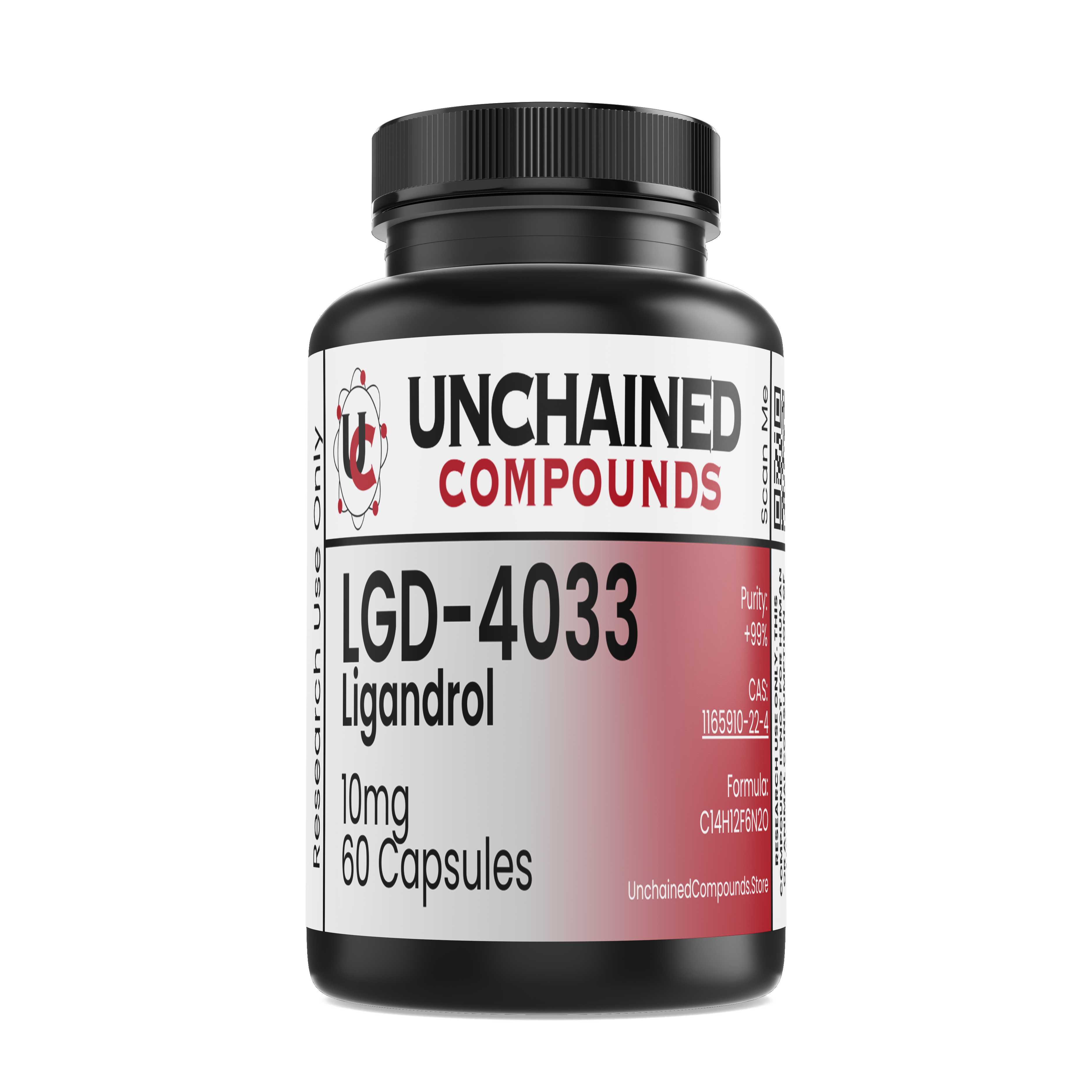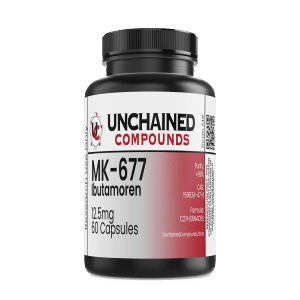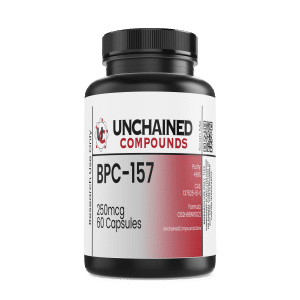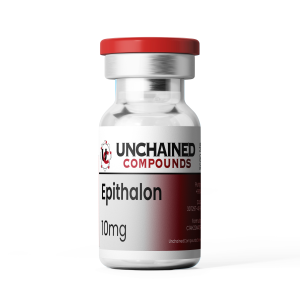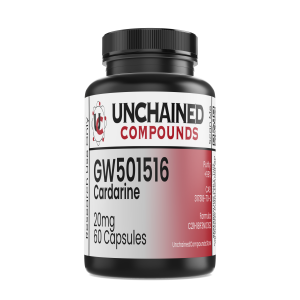Description




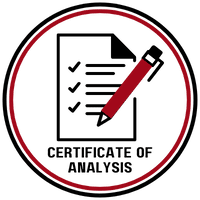

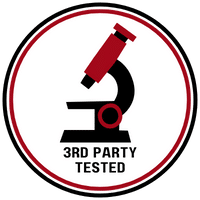
LGD-4033 is a novel nonsteroidal oral selective androgen receptor modulator (SARM) for treatment of conditions such as muscle wasting and osteoporosis.
Specifications
- Chemical Formula: C14H12F6N2O
- Molecular Mass: 338.253 g/mol
- Synonyms: Ligandrol
- CAS Number: 1165910-22-4
- PubChem: 44137686
- Total Amount of the Active Ingredient: 10mg/capsule and 60 capsules
- Shelf Life: 36 months
Minimize open air exposure, store in a cool dry place
Research Studies
Abstract
New findings: What is the main observation in this case? Co-administration of LGD-4033 and MK-677 increased body mass, lean mass and fat mass, while negatively impacting bone, serum lipids, liver enzymes, testosterone (total and free) and, probably, follicle-stimulating hormone. What insights does it reveal? Our cross-sectional data imply that these compounds might alter intramuscular androgenic hormone and receptor concentrations along with promoting muscular strength, when compared with previously published data from trained males.
Abstract: LGD-4033, a selective androgen receptor modulator, and MK-677, a growth hormone secretagogue, are being used increasingly amongst recreationally active demographics. However, limited data exist describing their effects on health- and androgen-related biomarkers. The purpose of this case study was to determine changes in body composition and biomarkers during and after continued co-administration of LGD-4033 and MK-677. We also aimed to examine muscular strength and intramuscular androgen-associated biomarkers relative to non-users. A 25-year-old male ingested LGD-4033 (10 mg) and MK-677 (15 mg) daily for 5 weeks. Blood and body composition metrics were obtained pre-, on- and post-cycle. One-repetition maximum leg and bench press, in addition to intramuscular androgens and androgen receptor content, were analysed on-cycle. We observed pre- to on-cycle changes in body composition (body mass, +6.0%; total lean body mass, +3.1%; trunk lean body mass, +6.6%; appendicular lean body mass, +4.3%; total fat mass, +15.4%; trunk fat mass, +2.8%; and appendicular fat mass, +14.8%), bone (bone mineral content, -3.60%; area, -1.1%; and bone mineral density, -2.1%), serum lipid-associated biomarkers (cholesterol, +14.8%; triglycerides, +39.2%; low-density lipoprotein-cholesterol, +40.0%; and high-density lipoprotein-cholesterol, -36.4%), liver-associated biomarkers (aspartate aminotransferase, +95.8%; and alanine aminotransferase, +205.0%) and androgen-associated biomarkers (free testosterone, -85.7%; total testosterone, -62.3%; and sex hormone-binding globulin, -79.6%); however, all variables returned to pre-cycle values post-cycle, apart from total fat mass, appendicular fat mass, bone area, total cholesterol and low-density lipoprotein-cholesterol. Follicle-stimulating hormone was below clinical reference values on- (1.2 IU/L) and post-cycle (1.3 IU/L). Intramuscular androgen receptor (-44.6%), testosterone (+47.8%) and dihydrotestosterone (+34.4%), in addition to one-repetition maximum leg press and bench press (+39.2 and +32.0%, respectively), were different in the case subject compared with non-users. These data demonstrate that LGD-4033 and MK-677 increase several body composition parameters, whilst negatively impacting bone and several serum biomarkers. Given the sparsity of data in recreationally using demographics, further research is warranted to elucidate the acute and chronic physiological effects of these anabolic agents.
Abstract
Background
Concerns about potential adverse effects of testosterone on prostate have motivated the development of selective androgen receptor modulators that display tissue-selective activation of androgenic signaling. LGD-4033, a novel nonsteroidal, oral selective androgen receptor modulator, binds androgen receptor with high affinity and selectivity.
To evaluate the safety, tolerability, pharmacokinetics, and effects of ascending doses of LGD-4033 administered daily for 21 days on lean body mass, muscle strength, stair-climbing power, and sex hormones.
In this placebo-controlled study, 76 healthy men (21–50 years) were randomized to placebo or 0.1, 0.3, or 1.0 mg LGD-4033 daily for 21 days. Blood counts, chemistries, lipids, prostate-specific antigen, electrocardiogram, hormones, lean and fat mass, and muscle strength were measured during and for 5 weeks after intervention.
LGD-4033 was well tolerated. There were no drug-related serious adverse events. Frequency of adverse events was similar between active and placebo groups. Hemoglobin, prostate-specific antigen, aspartate aminotransferase, alanine aminotransferase, or QT intervals did not change significantly at any dose. LGD-4033 had a long elimination half-life and dose-proportional accumulation upon multiple dosing. LGD-4033 administration was associated with dose-dependent suppression of total testosterone, sex hormone–binding globulin, high density lipoprotein cholesterol, and triglyceride levels. follicle-stimulating hormone and free testosterone showed significant suppression at 1.0-mg dose only. Lean body mass increased dose dependently, but fat mass did not change significantly. Hormone levels and lipids returned to baseline after treatment discontinuation.
Conclusions
LGD-4033 was safe, had favorable pharmacokinetic profile, and increased lean body mass even during this short period without change in prostate-specific antigen. Longer randomized trials should evaluate its efficacy in improving physical function and health outcomes in select populations.
Abstract
LGD-4033 is one of a number of selective androgen receptor modulators (SARMs) that are being developed by the pharmaceutical industry to provide the therapeutic benefits of anabolic androgenic steroids, without the less desirable side effects. Though not available therapeutically, SARMs are available for purchase online as supplement products. The potential for performance enhancing effects associated with these products makes them a significant concern with regards to doping control in sports. The purpose of this study was to investigate the metabolism of LGD-4033 in the horse following oral administration, in order to identify the most appropriate analytical targets for doping control laboratories. LGD-4033 was orally administered to two Thoroughbred horses and urine, plasma and hair samples were collected and analysed for parent drug and metabolites. LC-HRMS was used for metabolite identification in urine and plasma. Eight metabolites were detected in urine, five of which were excreted only as phase II conjugates, with the longest detection time being observed for di- and tri-hydroxylated metabolites. The parent compound could only be detected in urine in the conjugated fraction. Seven metabolites were detected in plasma along with the parent compound where mono-hydroxylated metabolites provided the longest duration of detection. Preliminary investigations with hair samples using LC–MS/MS analysis indicated the presence of trace amounts of the parent compound and one of the mono-hydroxylated metabolites. In vitro incubation of LGD-4033 with equine liver microsomes was also performed for comparison, yielding 11 phase I metabolites. All of the metabolites observed in vivo were also observed in vitro.
Disclaimer
The information provided above is not intended to substitute medical advice, diagnosis, or treatment. Should you have any questions regarding a medical condition, seek the advice of your physician or a qualified healthcare provider. In no case should medical advice be disregarded or delayed because of what you have read or seen. We bear no responsibility or liability for your use of any of our research compounds and products. Please note that they are being sold for research purposes ONLY. We do NOT condone any personal use.
NOTE: In some cases wherein the assigned top colors are out of stock, a different top color will be used to ensure that your order will not be delayed. Should you need assistance identifying the peptide vial that you received, please send us an email at support@unchainedcompounds.store
ALL ARTICLES AND PRODUCT INFORMATION PROVIDED ON THIS WEBSITE ARE FOR INFORMATIONAL AND EDUCATIONAL PURPOSES ONLY.
The products offered on this website are intended for in-vitro studies only. In-vitro studies (Latin: “in glass”) are performed outside the body. These products are not medicines or drugs and have not been approved by the FDA to prevent, treat, or cure any medical condition, ailment, or disease. Bodily introduction of any kind into humans or animals is strictly forbidden by law.


